Distinctive Wine Programs | On Preservation
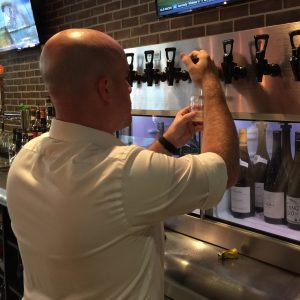
Rightly proud of its vibrant food and drink scene, Minnesota earns high acclaim for its local markets, bars, bistros, and many of the nation’s hottest restaurants. From Saveur to Food & Wine, CNN to the James Beard Awards, google “Minnesota dining scene” and it proves a headwater of talent and varied delights alike. This doesn’t come by accident. Keen vision, this Midwestern work ethic, an abundance of fresh, local produce, and honed culinary skills all play their part. Where we rise above is our heartfelt service and an attention to every detail beyond the kitchen door. A meal is but a dish without the wine that goes with it. A distinctive wine program is essential to propel what would be a delicious restaurant into a delectable hot spot. This series aims to share the bold decisions that foster such wine programs so people sit up and take notice of what sets the best apart and makes for an extraordinary experience. Our initial article in this series covers the critical importance of preservation. Join us to learn why every one of us should take preservation seriously.
Think of wine as fresh produce. While it is here to make merry and raise any dish to a whole new plane, it is still fermented fruit and perishable by nature. From harvest when the first clusters are picked by hand, winegrowers take great pains to preserve all the aromas and flavors they have worked all year to ripen. Now comes our turn at The Wine Company where we both import and store these under gentle refrigeration to maintain every charm and nuance so this wine arrives to you as the winemaker intended. Then it is up to you!
From wine connoisseur to restaurateur, those who keep cellars spare no effort to maintain the best conditions while that wine is in their care but what happens at the local wine bar once a wine featured by-the-glass is opened? Pop goes the cork, out glugs the wine, and a big gulp of air begins to oxidize and break down the remaining wine. Unless of course one has a preservation system.
Le Verre de Vin, Coravin, VacuVin, Private Preserve, Enomatic, By The Glass, Perlage …the list goes on and on and runs the gamut from simple vacuum pumps and cans of inert gases to protect the juice from oxygen to sophisticated syringes that displace wine with argon or elaborate bar top refrigerators with state of the art hoses and pumps. A lot of fuss goes into preserving wine but is it worth it?
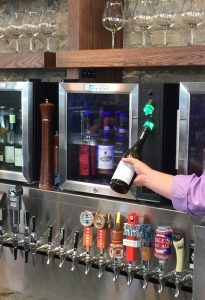 Jason Kallsen is convinced. Sommelier at Luke Shimp’s Red Rabbit and the Red Cow restaurants, Kallsen makes clear, “It makes zero sense for a restaurant to not take it seriously because it is a preservation of your income. It’s your stock and how can you honestly write a business plan if you don’t know how much of a bottle you’re going to dump out? It makes no sense at all. If you are doing $100,000 in wine sales a year a top end system will pay for itself in six months and then everything thereafter is gravy because you aren’t pouring any wine out at the end of each week, every guest is drinking wine at its very best, and you’re making every wine you pour more valuable -showing the wine the way the winemaker intended.”
Jason Kallsen is convinced. Sommelier at Luke Shimp’s Red Rabbit and the Red Cow restaurants, Kallsen makes clear, “It makes zero sense for a restaurant to not take it seriously because it is a preservation of your income. It’s your stock and how can you honestly write a business plan if you don’t know how much of a bottle you’re going to dump out? It makes no sense at all. If you are doing $100,000 in wine sales a year a top end system will pay for itself in six months and then everything thereafter is gravy because you aren’t pouring any wine out at the end of each week, every guest is drinking wine at its very best, and you’re making every wine you pour more valuable -showing the wine the way the winemaker intended.”
Scanning the room, noting wine on every table, the guests at Red Rabbit seem to appreciate this as well as their choice from well over 40 wines by-the-glass -especially when each wine arrives at its very best. “The wine being poured at one restaurant is not worth the same as that same wine being poured in another restaurant.” Kallsen explains. It is not simply a matter of the costs per case or bottle. These inform what restaurants charge in turn but Kallsen extolls the virtues of stemware, service temperature and most importantly preservation. If every wine is properly served in the right glass at the right temperature as it is meant to be, wine drinkers will come back and back again for more.
 Just ask Charlie Broder of Broders’ Pasta Bar and TERZO -early adopters where preservation has proven itself for years. “We’re the sort of place that if you want to get a porchetta sandwich and an immaculately aged Barolo, you can do that. You can also have a three-course meal and have four wines by-the-glass that are really affordable, really interesting, and perfect when they get to you because they’re preserved.”
Just ask Charlie Broder of Broders’ Pasta Bar and TERZO -early adopters where preservation has proven itself for years. “We’re the sort of place that if you want to get a porchetta sandwich and an immaculately aged Barolo, you can do that. You can also have a three-course meal and have four wines by-the-glass that are really affordable, really interesting, and perfect when they get to you because they’re preserved.”
Broder’s first encounter with any preservation was the Enomatic at Maialino in New York City, where he enjoyed an ’85 Barbaresco by-the-glass. “By the glass! It was a real eye opening to see. I’d never seen that in our market.” Not only did it open new worlds of by-the-glass pours for those dining out but it preserved them for the next person looking to drink something more interesting than most restaurants would ever venture to offer by-the-glass. It also preserves a restaurants’ profits when by-the-glass leftovers aren’t being finished off at closing time for fear the wine might not hold up.
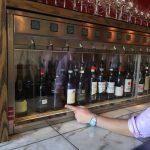 Now the glass pour program dominates sales at TERZO -justifying its place behind the bar and the options it brings those who thirst for something better. Armed with a By The Glass system for behind the bar and a Perlage system for the sparkling wines, Broder now offers glass pours on over 30 wines by-the-glass with prices typically ranging from $9 to $25. “The amount of $20 glasses of wine we sell at TERZO is staggering. It’s really surprising. We probably go through half a case a week that are marked at the $90 to $120 at the bottle level…just in by-the-glass!” Now wine lovers tucking into some of the best Italian fare to be found can enjoy everything from rare Barbaresco to Chianti Classico Riservas, whites from Friuli to the best sparkling wines of Franciacorta. All by-the-glass and all tasting as they should.
Now the glass pour program dominates sales at TERZO -justifying its place behind the bar and the options it brings those who thirst for something better. Armed with a By The Glass system for behind the bar and a Perlage system for the sparkling wines, Broder now offers glass pours on over 30 wines by-the-glass with prices typically ranging from $9 to $25. “The amount of $20 glasses of wine we sell at TERZO is staggering. It’s really surprising. We probably go through half a case a week that are marked at the $90 to $120 at the bottle level…just in by-the-glass!” Now wine lovers tucking into some of the best Italian fare to be found can enjoy everything from rare Barbaresco to Chianti Classico Riservas, whites from Friuli to the best sparkling wines of Franciacorta. All by-the-glass and all tasting as they should.
 This also brings up a great example of having confidence in your consumer -made all the easier thanks to preservation. Consider featuring Barolo by-the-glass as a case in point. “Somebody might not buy a bottle of Barolo” Charlie admits “…but they might buy a glass. So all of a sudden when you get four of those people into the restaurant over two days’ time, you’re selling a $100-$160 bottle of wine.” A wine that featured on the bottle list might have otherwise sat in the cellar. The dining guest is happy for access to this special wine -sometimes even at a 3-ounce “half glass” without having to commit to an entire bottle. Meanwhile the restaurant is making twice as much as they might for any other glass pour. “If you value quality over quantity, TERZO is where you like to drink wine. That’s our mentality.” Suddenly even the older vintages of wines that are grown for great age are available as cellar-wine-features that pop up over the weekends. How else could one do that outside of a wine dinner? Preservation makes all this possible by-the-glass.
This also brings up a great example of having confidence in your consumer -made all the easier thanks to preservation. Consider featuring Barolo by-the-glass as a case in point. “Somebody might not buy a bottle of Barolo” Charlie admits “…but they might buy a glass. So all of a sudden when you get four of those people into the restaurant over two days’ time, you’re selling a $100-$160 bottle of wine.” A wine that featured on the bottle list might have otherwise sat in the cellar. The dining guest is happy for access to this special wine -sometimes even at a 3-ounce “half glass” without having to commit to an entire bottle. Meanwhile the restaurant is making twice as much as they might for any other glass pour. “If you value quality over quantity, TERZO is where you like to drink wine. That’s our mentality.” Suddenly even the older vintages of wines that are grown for great age are available as cellar-wine-features that pop up over the weekends. How else could one do that outside of a wine dinner? Preservation makes all this possible by-the-glass.
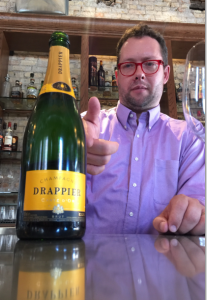 Back at Red Rabbit, Kallsen is also bringing on wines people really want but seldom have access to enjoy -especially by-the-glass. Between the Le Verre de Vin for most still and sparkling wines and the Coravin for the finest wines and older vintages, Red Rabbit’s by-the-glass list reads like a wish list and only because they can rely on all these holding up if they are not finished over the course of a few days. The Le Verre de Vin operates on a pressure system that reaches one of two equilibriums. In the case of still wines it sucks out all the oxygen but only enough to prevent oxidation without pulling anything from the wine itself. For sparkling Le Verre de Vin inserts only enough CO2 as to create a blanket without further carbonating the wine just so that it doesn’t fill the new headspace with its own CO2 leaving the remainder less effervescent. Thanks to this, guests are drinking Drappier Champagne for $17 by-the-glass. Opened three times over five days ago, it showed as fresh as a bottle that had just been opened. Kallsen makes a strong case, “If you can do Cava for $10-$12, then why not?” From in-house trials, they found the system keeps wines fresh up to 17 days before showing any degradation. Although they never need a wine to last that long at the pace they are going. It certainly affords one confidence -especially when they serving such delectable wines as Brundlmeyer and Bollinger Grand Année by-the-glass. “You can sell four glasses in the course of two weeks and it’s not a problem.”
Back at Red Rabbit, Kallsen is also bringing on wines people really want but seldom have access to enjoy -especially by-the-glass. Between the Le Verre de Vin for most still and sparkling wines and the Coravin for the finest wines and older vintages, Red Rabbit’s by-the-glass list reads like a wish list and only because they can rely on all these holding up if they are not finished over the course of a few days. The Le Verre de Vin operates on a pressure system that reaches one of two equilibriums. In the case of still wines it sucks out all the oxygen but only enough to prevent oxidation without pulling anything from the wine itself. For sparkling Le Verre de Vin inserts only enough CO2 as to create a blanket without further carbonating the wine just so that it doesn’t fill the new headspace with its own CO2 leaving the remainder less effervescent. Thanks to this, guests are drinking Drappier Champagne for $17 by-the-glass. Opened three times over five days ago, it showed as fresh as a bottle that had just been opened. Kallsen makes a strong case, “If you can do Cava for $10-$12, then why not?” From in-house trials, they found the system keeps wines fresh up to 17 days before showing any degradation. Although they never need a wine to last that long at the pace they are going. It certainly affords one confidence -especially when they serving such delectable wines as Brundlmeyer and Bollinger Grand Année by-the-glass. “You can sell four glasses in the course of two weeks and it’s not a problem.”
Le Verre de Vin keeps most of their still wines fresh for 14 days or more but for the really high end -the Barolo, the Amarone and the like, they use Coravin. Because the double barreled syringe punctures the cork and permits the system to displace wine with argon as it pours, these wines should not budge at all, “but it takes time and staff training” Kallsen cautions “to make sure the staff are familiar with the process, so they don’t break the needle, purge the gas out of canisters. Training is a gigantic thing when it comes to those but you’re offering rare wines by-the-glass…if you have a preservation system, do it all by the glass! Who cares?”
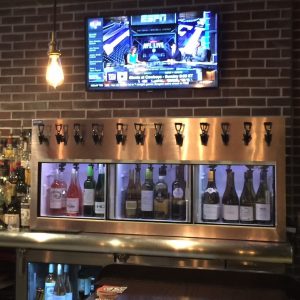 No matter the preservation system, staff training is of paramount importance. As Broder asserts the “best preservation system is a well-trained staff. When your people know what’s in stock, what’s available, what needs to be moved and what they should be selling, you will not need preservation because your staff is effectively selling your wine program but that is so difficult and what’s not difficult is pushing a button. There are tradeoffs so we do both.”
No matter the preservation system, staff training is of paramount importance. As Broder asserts the “best preservation system is a well-trained staff. When your people know what’s in stock, what’s available, what needs to be moved and what they should be selling, you will not need preservation because your staff is effectively selling your wine program but that is so difficult and what’s not difficult is pushing a button. There are tradeoffs so we do both.”
Happily, for all involved, preservation proves the case for the rising tide lifting all ships. From a restaurateur’s offerings and their viability, to providing a superior dining experience for all guests, preservation systems have changed the landscape for the better. A decade ago ordering wines by-the-glass was a crap shoot. Is it a fresh bottle? Could this be the tired dregs from two nights ago? No longer. Even those that cannot commit to a bar top system can still pony up for a Coravin or at the very least a case of Private Preserve canisters -available wholesale from The Wine Company by the by. Preservation systems improve wine drinking one glass at a time for a good number of restaurants across the Twin Cities and outstate as well. From Pescara in Rochester to Bellisio’s in Duluth, from the Veranda Lounge in Saint Cloud, to those as far afield as Bar Harbor and “Cru” at Grandview Lodge in the Brainerd Lakes Area. Preservation has caught on so next time you are out, take note of who is looking after their wine make a point of tasting the difference.







